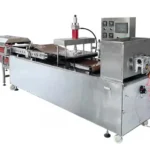Exploring the Different Types of Electric Actuators for Valve Applications

Valves are important components in an industry’s process control systems and electric actuators are vital for their automated control. One of them is the electric actuated valve, which as the name suggests, is powered by an electric motor. This design is much better than the manual systems. In this article we will discuss the various classes of electric actuators for purposes of automation of valve control, their functions, and applications.
What is an Electric Actuated Valve?
What Is An Electric Actuated Valve? There are those valves, which have an integrated electric actuator. The actuator moves, (by turning on its power) the valve mechanical part, usually by means of rotation or linear movement. The valve electric actuator is a common device implemented in the oil, gas, water treatment, HVAC, and energy industries. The most important benefit of using electric actuators is their capability of overriding manual control to enhance usability, efficiency, and safety. Because there is no need for physical presence of the operator, there is virtually no limitation or requirements. In industrial processes, electric actuated valves can be set to respond accurately and timely to enable automated, controlled, and forgiving systems for human rather than restrictive. Electric actuated valves, are however, also custom electric modulating valves that support throttling, and flow modulation, and provide more complex integrated. Electric Actuated Valves have stepless control, allowing their use in a wider range of industrial systems.
Different Types of Electric Actuators For Valves
Electric actuators are varied in form having different design features intended for different functions. Rotary electric actuators are one of the most common types particularly in systems where valves like ball, butterfly, and globe valves, which need to be turned in order to work, are used. These actuators have an electric motor that rotates the valve to the set position, realizing positive control of the valve’s position. Rotary electric actuators suit processes requiring fast and dependable opening or closing of the valve to be done like in petrochemical and water treatment industries. Similarly, Linear electric actuators are used in the case of gate and globe valves that require linear motion to function. These electric actuators convert the rotary movement of the electric motor to linear movement through a screw or gear, providing accurate control of the fluid passage. Pneumatic electric actuators use both the electric motor and pneumatic pressure, giving them faster motion response and higher force output. In automatic gate valve systems, these electric actuators are most desirable because they work well under highly pressurized conditions where speed and reliability are required.
Another key type of actuator is the fail-safe electric actuator which has safety features incorporated within them so that the valve can either totally open or close at the event of a power outage. This function is crucial for industry sectors such as nuclear or chemical processing. Lastly, multi-turn electric actuators are suitable for larger valves like gate valves, which require more than one full turn to operate. These actuators are quiet and highly efficient. They also offer the right amount of control and torque for heavier industrial uses.
Looking for fast and reliable NY Air Conditioning Repair Service? Our expert technicians are here to keep your home cool and comfortable.
Pick the Best Electric Actuator for Valve Applications
Electric actuators for valves are users’ favorites because of their efficiency, precision, and safeness. The choice of actuator is determined by factors that affect it, for example, the kinds of valves in use, the torque needed, available power and the features of the control system. Actuators are selected based on the type of valves used, so it is important to outline the types of valves in your systems. A rotary actuator is preferably used with ball and butterfly valves because they need rotational motion, while other valves such as gate valves that require linear motion need a linear actuator. Also, the actuator of the valve’s torque must be satisfied. Greater power to operate the valve is needed by some larger valves which generally require higher torque as other smaller valves may need less power. The power supply is another crucial area of concern since electric actuators use AC or DC power. It is always advisable to use the power supply in the system for the actuator to encourage good performance. The actuator power supply form is not the only thing that needs to be considered. The actuator has to be compatible with the control system too.
With the advancements in modern technology, most contemporary electric actuators can now be integrated into automated control systems for remote monitoring, operation, and data collection. This integration improves in overall efficiency in the operation of valves, reduces the manual work required, and increases safety. Considering these factors is beneficial when selecting the electric actuator for a specific valve application.
Advantages of Using Electric Actuators in Valve Applications
Electric actuators provide a number of benefits for use with valves compared to manual operated systems, which is why many Electric actuators are increasingly being used in modern industries. They are easier to control than manual-operated systems, one of their most notable features and greatest advantages. For example, Electric actuators make it possible to control the valve operation with much better accuracy than through the use of manual methods. This measure of control is further exemplified among critical industries such as pharmaceuticals and chemical engineering, where precision is crucial . Electric actuators have further advantages, with partial automation of valve operation being one of them. Electric Actuators can be linked with already existing automated valve control systems for remote valve operation and monitoring. Such new technologies make it possible to respond quickly and eliminate the need for operators to be present at the site, thus improving operational efficiency. Last, but not the least, Electric Actuators increase the level of safety. Reliable valves ensure that accidents and failures are avoided, and many fail-safe valve actuators automatically assume a specific failsafe position when power is lost. Automatic systems not only improve safety, but also boost productivity by enabling remote and unattended automated operations. In oil and gas industries, electric actuators are effective in preventing dangerous situations because the system condition controls whether the valve will open or close and in power generation.
Another fundamental strength is the cheaper operational cost due to low energy consumption of electric actuators, in comparison with pneumatic or hydraulic systems. Furthermore, electric actuators require less energy to operate, resulting in lower utility expenses. In addition, the major moving components of pneumatic and hydraulic systems, which electric actuators do not have, are most prone to fail. Hence, the maintenance of electric actuators is less costly. This means that expenses on equipment upkeep are reduced which increases productivity and profitability of the company.
Ensure your home stays cool and comfortable with expert New Braunfels Air Conditioning Repair services. Trust our skilled technicians for fast, reliable solutions to all your AC issues.
Conclusion
Modern valve systems heavily rely on electric actuators which are fundamental parts of the system because they provide numerous solutions for various applications. Regardless of whether you employ a rotary, linear or multi-turn actuator, all of them have distinctive advantages that help improve the efficiency and reliability of the valve usage. In devices such as automatic gate valves, where the control has to be precise and safe, electric actuators provide the highest level of effectiveness. Knowledge of these types of electric actuators allows one to select the most appropriate actuators for their valve systems. It is also essential to consider the type of valve, the required torque from the actuator, the power supply, and whether the control system is compatible or not to achieve safe and efficient performance. For industries seeking to improve their valve control and operational performance, electric actuators represent a major investment due to their accuracy, automation, and reduced energy consumption.

The Hidden Business Power of Storytelling Through Books

Diamond Painting Apps & Digital Tools for 2025 Artists

Meeting Global Tastes: The Versatility of Commercial Tortilla Makers

Accelerating drug discovery through the DEL-ML-CS approach

AI in Marketing Is No Longer a Buzzword — It’s the Strategy

The Full Guide To Penetration Testing

Pixel 10 Pro Fold Case: Why Choose Aramid Fiber?

MT4 for Mac vs Windows: Which Version Works Better for Traders








